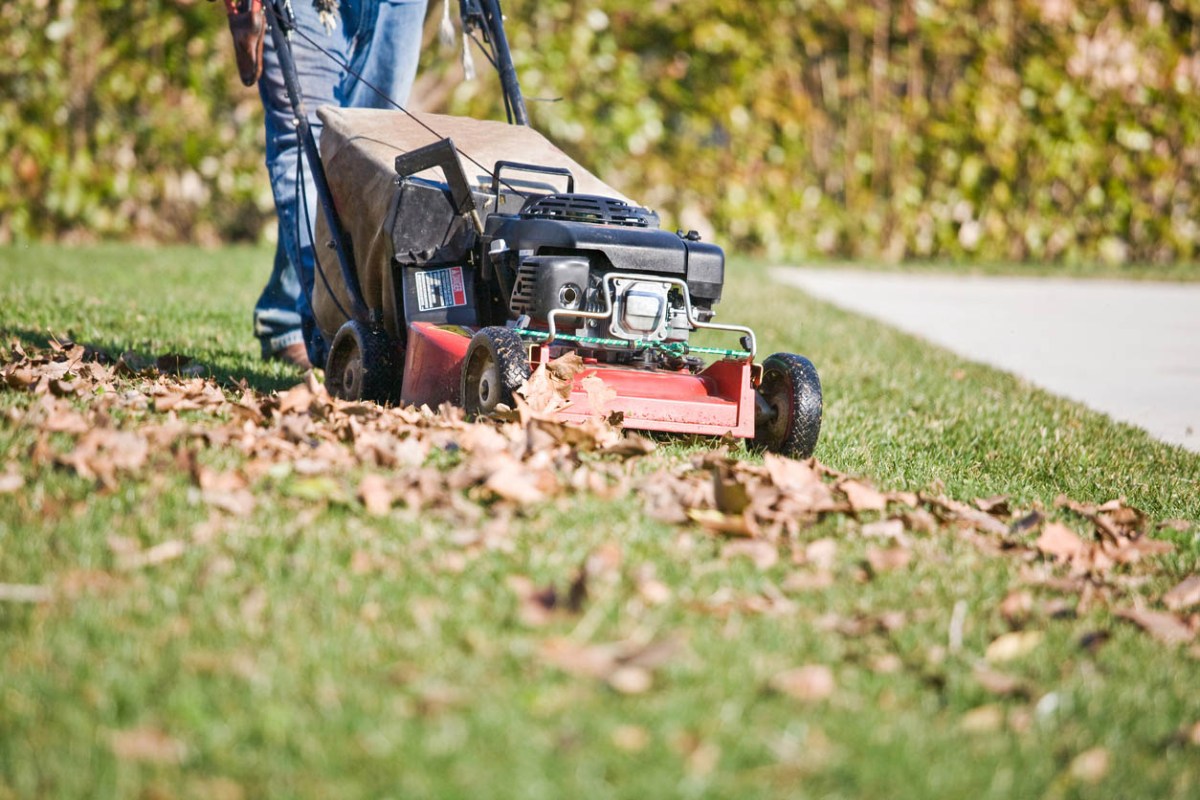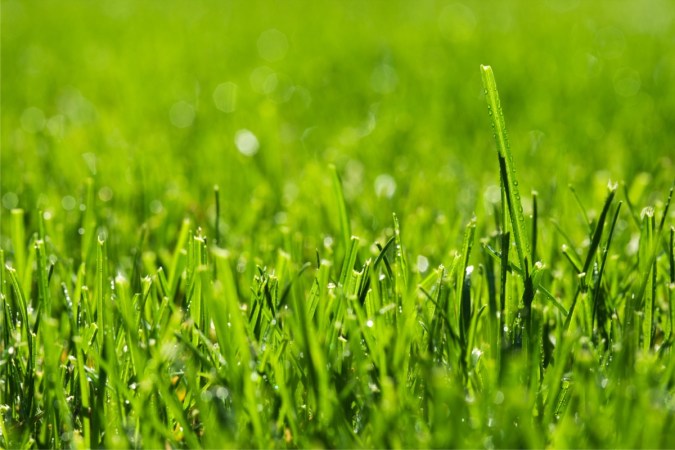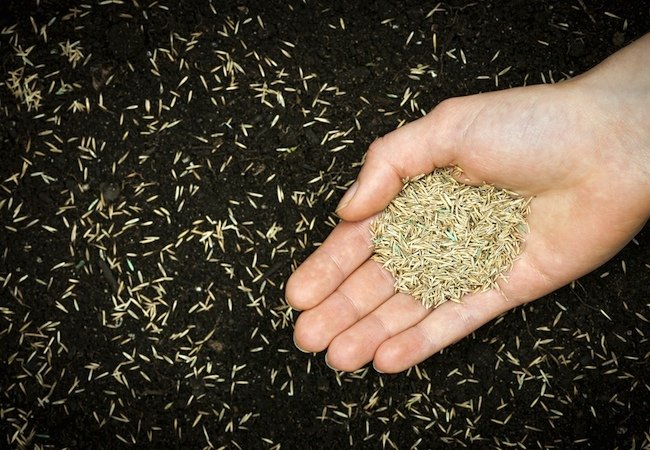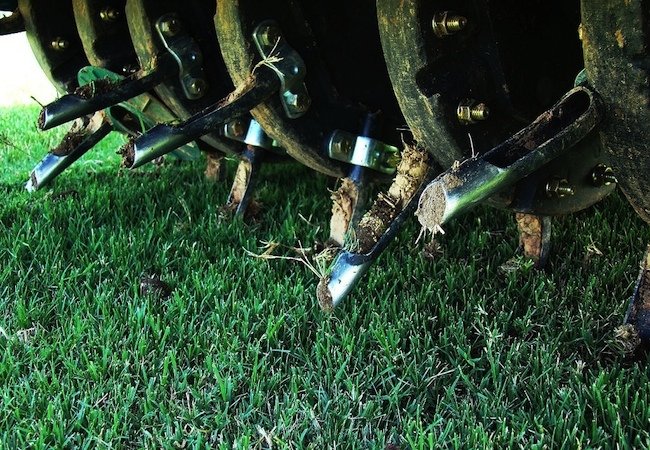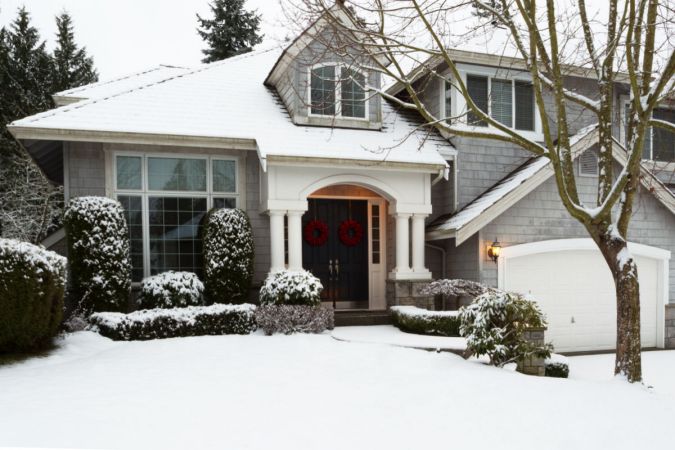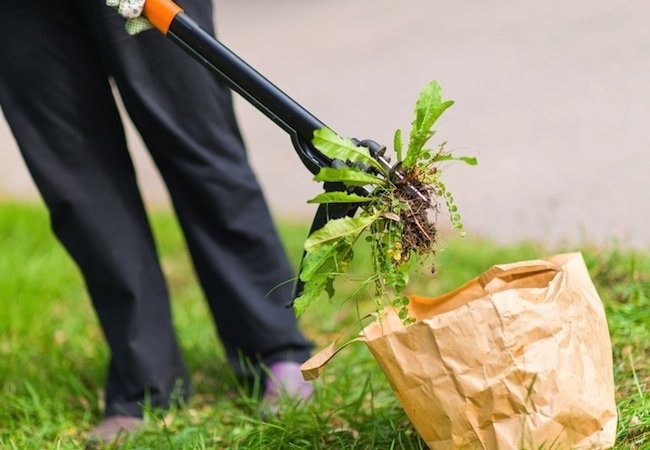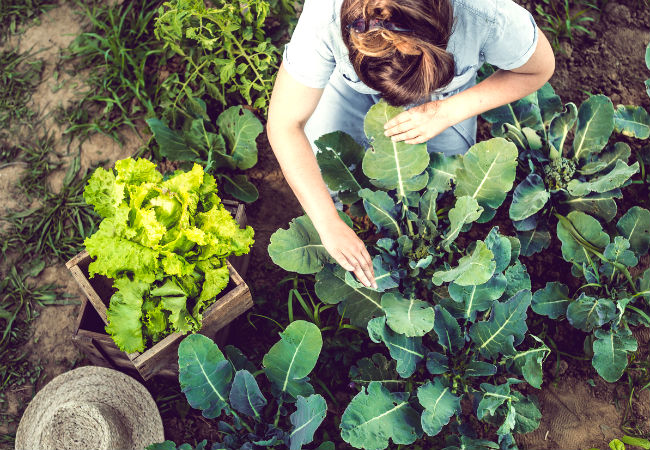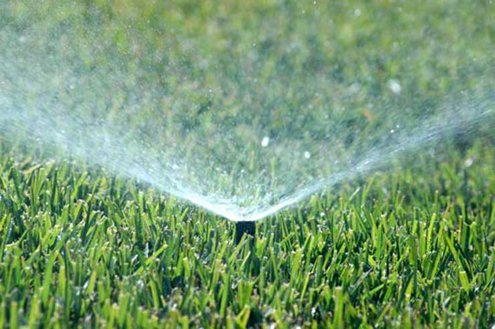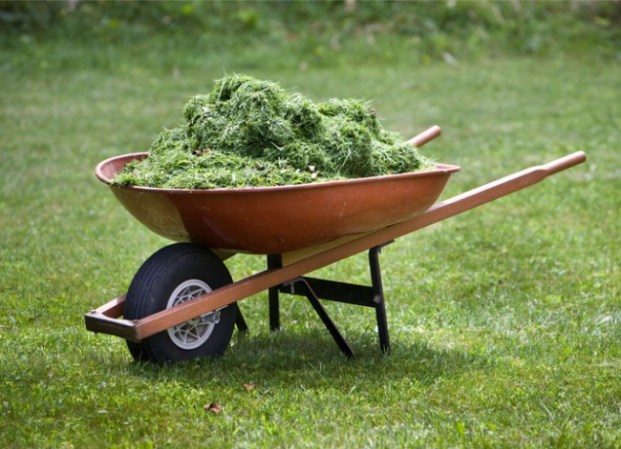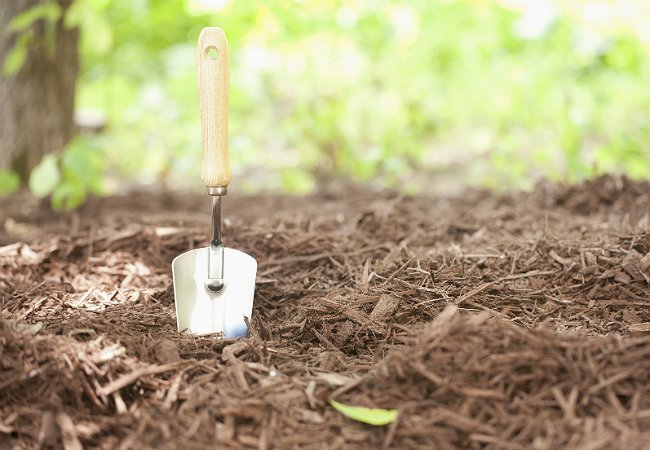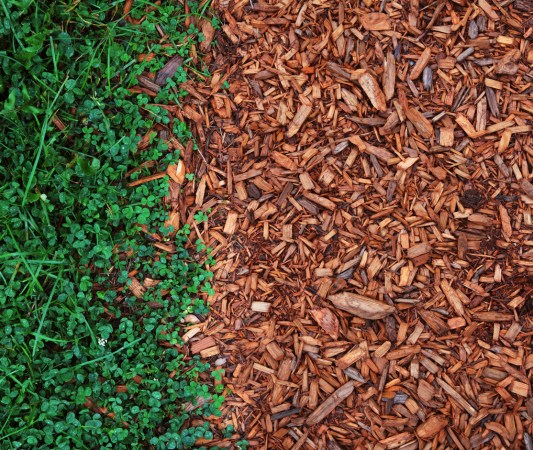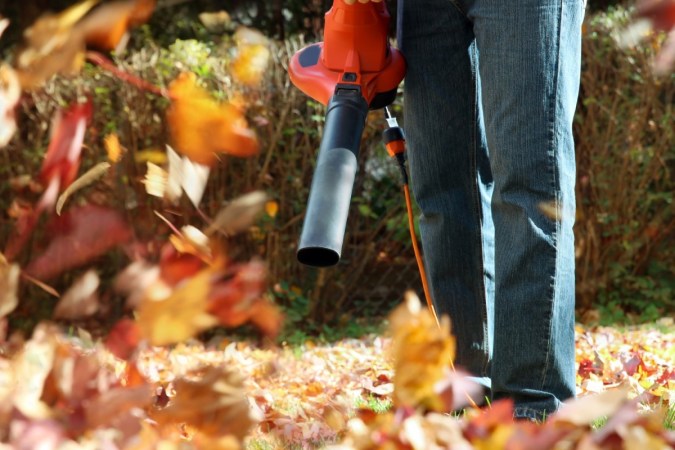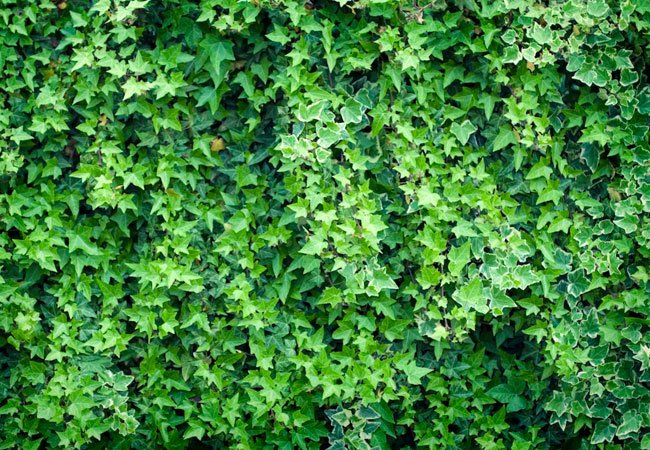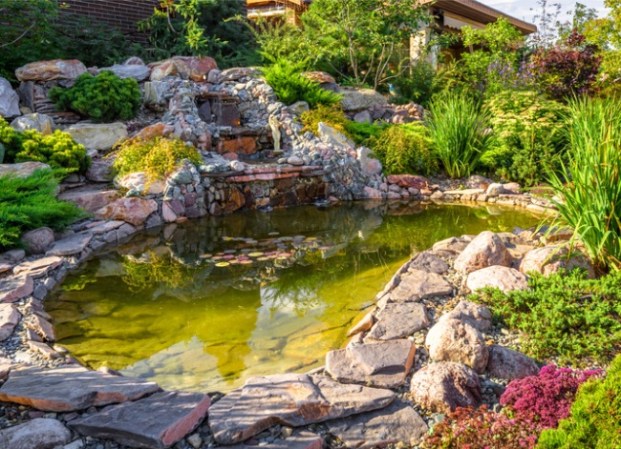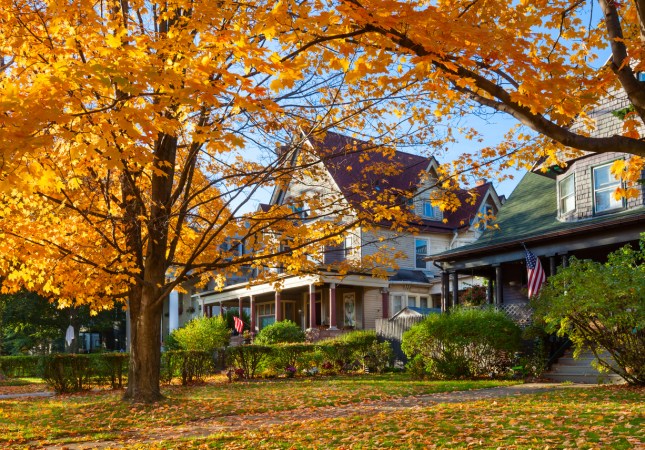We may earn revenue from the products available on this page and participate in affiliate programs. Learn More ›
Every year, fall reintroduces us to a raft of pleasures like no other season—hot apple cider, pumpkin carving, and so on. But fall also signals the return of one chore many of us dread: raking leaves. As surely as the seasons change, autumn mornings witness homeowners bent over rusty-tined rakes, endlessly scraping withered foliage onto tarps and into heavy-duty garbage bags.
You might be surprised to learn that, according to David Mizejewski of the National Wildlife Federation, leaf-raking is an optional exercise, and that mulching leaves can benefit your lawn—and local wildlife. For instance, many species of butterflies and moths overwinter as eggs , pupae, or adults in leaf litter.
Certainly, you don’t want to leave a thick layer of leaves to smother the grass growing beneath. But raking isn’t the only—or even the easiest—method of protecting your lawn’s health. It turns out that mulching leaves—that is, mincing them to shreds with your lawn mower—improves the health of your lawn. Once you know how to mulch leaves, it’s also less work than raking.
RELATED: The Dos and Don’ts of Cleaning Up Leaves
Benefits of Mulching Leaves Instead of Raking
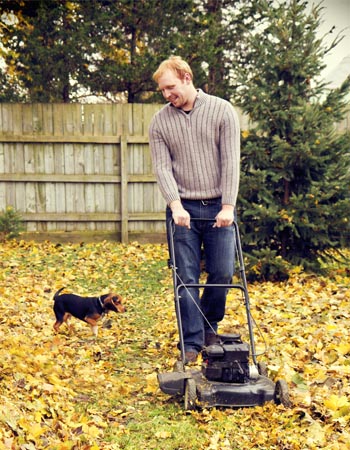
Skipping the annual fall raking chore will appeal to most home gardeners and the kids they recruit to help. Apart from the fun leaf pile the kids and dogs can jump into, raking isn’t on the top of most people’s “fun outdoor activities” list. While cleaning up can have its place in lawn care, by choosing to mulch leaves instead of raking, them you can:
- Improve the health of your soil
- Have a positive impact on the environment, helping insects and critters, and supporting microorganisms that live in soil
- Save money on plastic garbage bags by opting for a more ecofriendly approach
- Support the environment by eliminating the need for city pickup and disposal and by skipping use of a noisy, gas-powered leaf blower
- Create mulch for other areas of the garden
- Save time and effort, since mowing to mulch is quicker
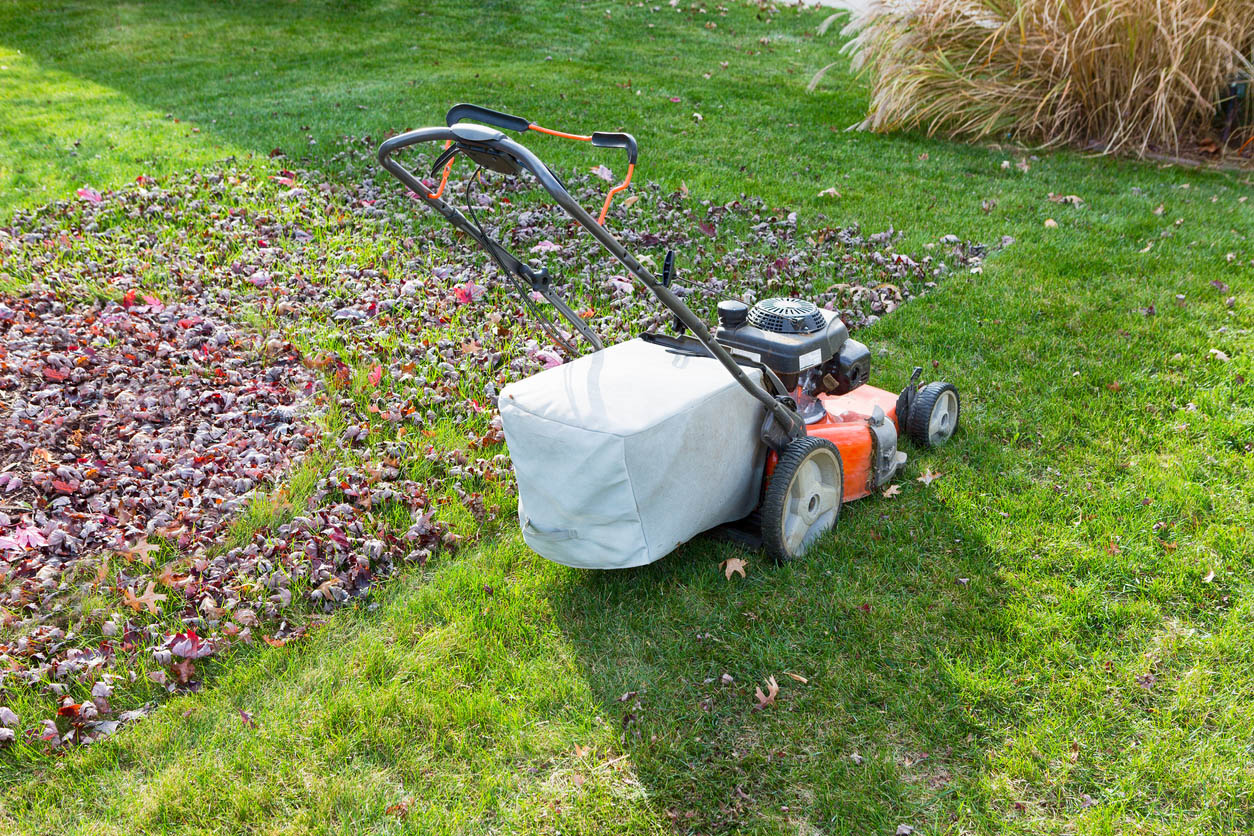
How to Mulch Leaves with a Lawn Mower
Mulching leaves can be as simple as pulling out your lawn mower and making a few passes. If you have lots of leaves to mulch, you might invest in a special mulching blade or mulching mower. Take these steps in fall to mulch your way to a healthier lawn.
1. Leave a thin layer of leaves on the lawn and mulch them using your mower.
Plenty of mowers with mulching capability are available on the market today. You can easily outfit a conventional, nonmulching mower with a serrated blade specially designed for mulching leaves. But neither is strictly necessary.
Any type of lawn mower can chop up leaves although it might take a few passes to do the job well. No matter what type of mower you own, prepare by setting the blade, or mower height, to its highest setting for mulching leaves. Then, remove the bag that collects clippings.
If the leaves are especially thick, you might need to spread them out or pick up some from the top (making that fun pile for the kids and dog). Turfgass specialists at Michigan State University say that you can mulch up to 6 inches of leaves at once.
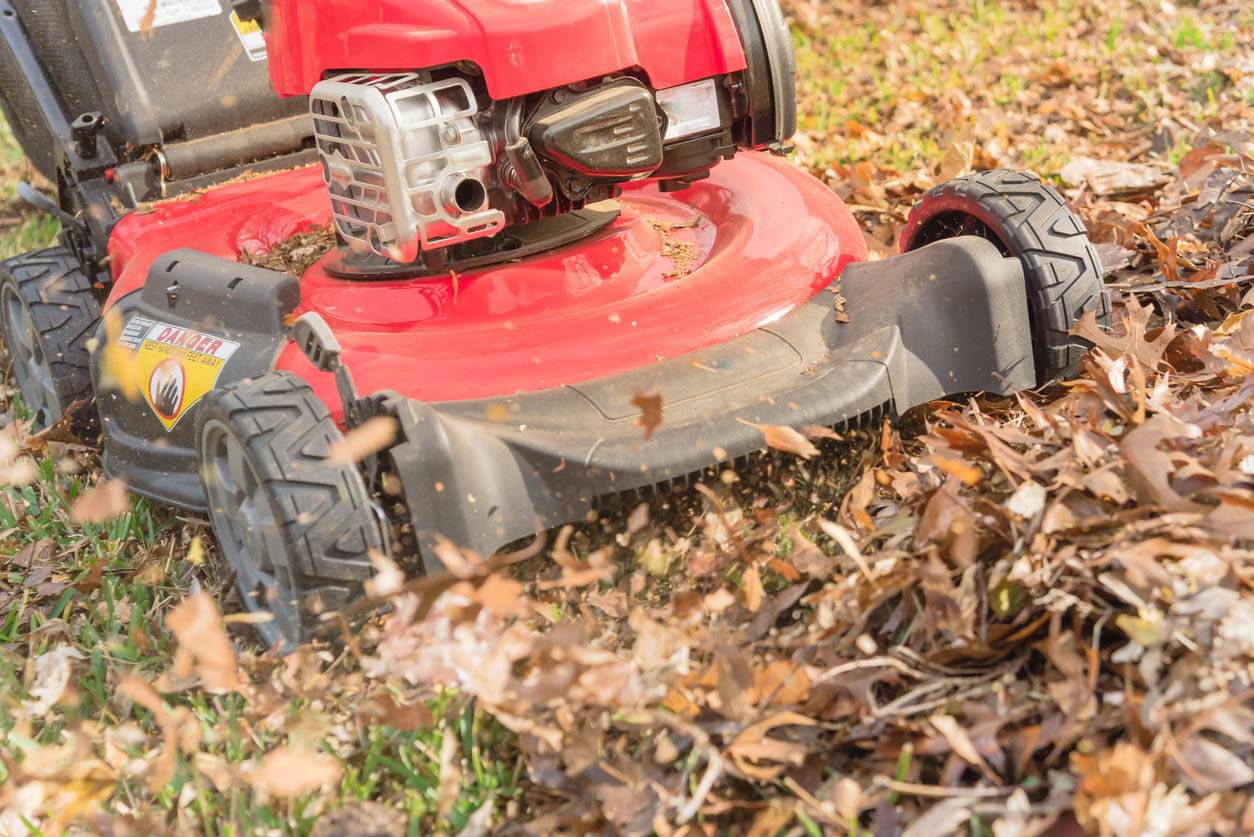
2. Shred leaves to pieces that are about the size of a dime.
Proceed to mow the lawn just as if it were any other day, when it might be the most exciting day of your life—the day you finally break free from the tyranny of raking. The goal is to cut the leaves into shreds that are about a half-inch in diameter (more or less the size of a dime).
Again, it might take more than one pass when mowing leaves to get the shreds to the desired size, depending on the leaf type and volume. When you’re done, the leaf shreds should begin resting between the blades of grass to reveal much of the lawn. A passerby might easily be fooled into thinking that you had raked, so if neatness matters, mulching still can work for you.
3. You still want to see your grass, so use your mower to bag any excess.
Consider mulching leaves on a weekly basis during the height of the season so there’s not enough time between mowings for more than 6 inches of leaves to accumulate. One week, let the mowed, chopped leaves remain in place. Then the next week, add the bag collector, run over the leaves with the mower again, and empty the mulched remains on a garden bed or around a winter-tender plant.
When you’re done, if you look at the shredded leaves scattered across your lawn and think, “I can’t see any grass whatsoever,” then do this: Reattach the bag to the lawn mower and go over the grass one last time. In the process, you’ll collect a surfeit of mulched leaves to either add to your garden beds or your compost pile.
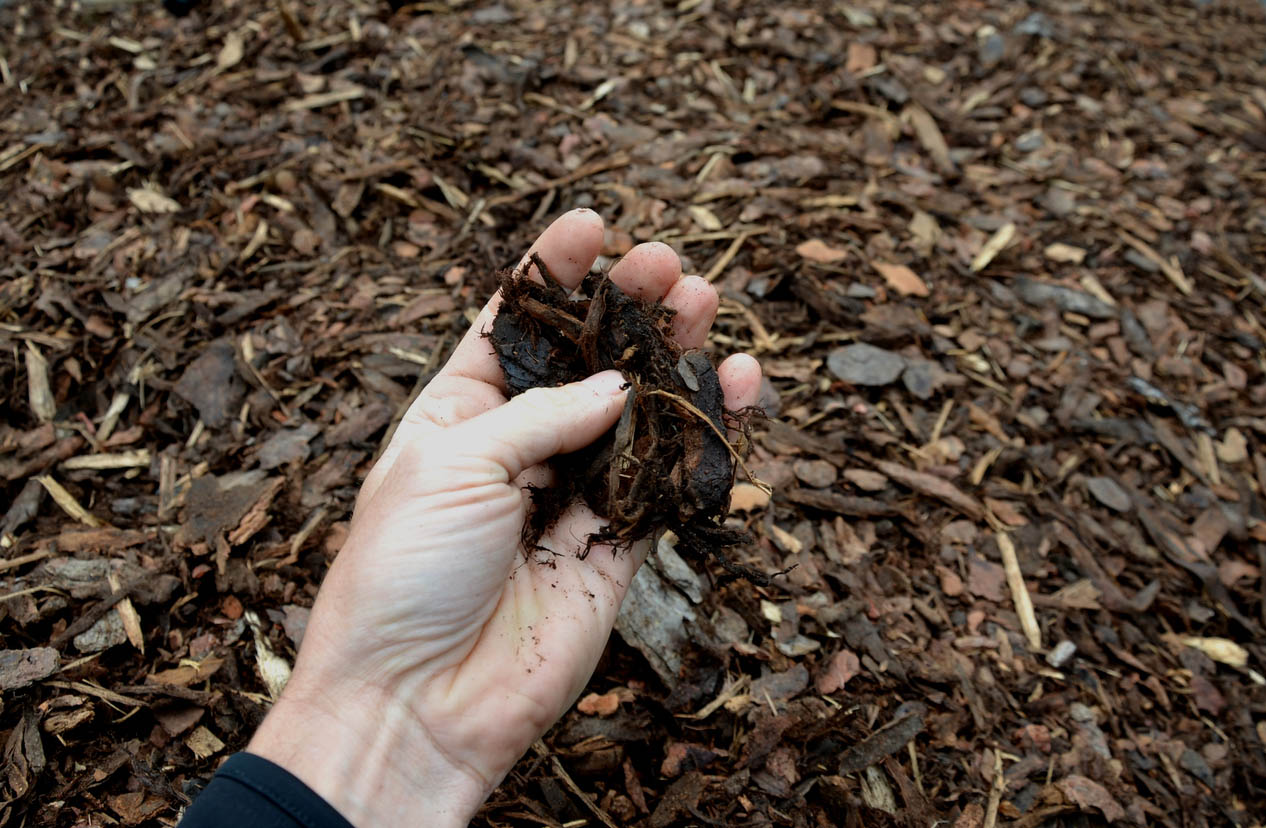
4. As the mulched leaves decompose, they fertilize the lawn.
Decomposing leaves enhance the soil with valuable nutrients that feed the microbes and worms present in any healthy lawn. Arguably, the nitrogen boost that results from mulching leaves is such that you don’t even have to fertilize in the fall.
This means that compared with raking, mulching leaves is easier and more lawn-friendly, plus less costly, saving you both the money and time spent on bagging leaves and fertilizing. It’s a shame for leaves to sit by the curb all wrapped up in tightly knotted plastic bags when they could be gracing your grass or garden beds with nourishment.
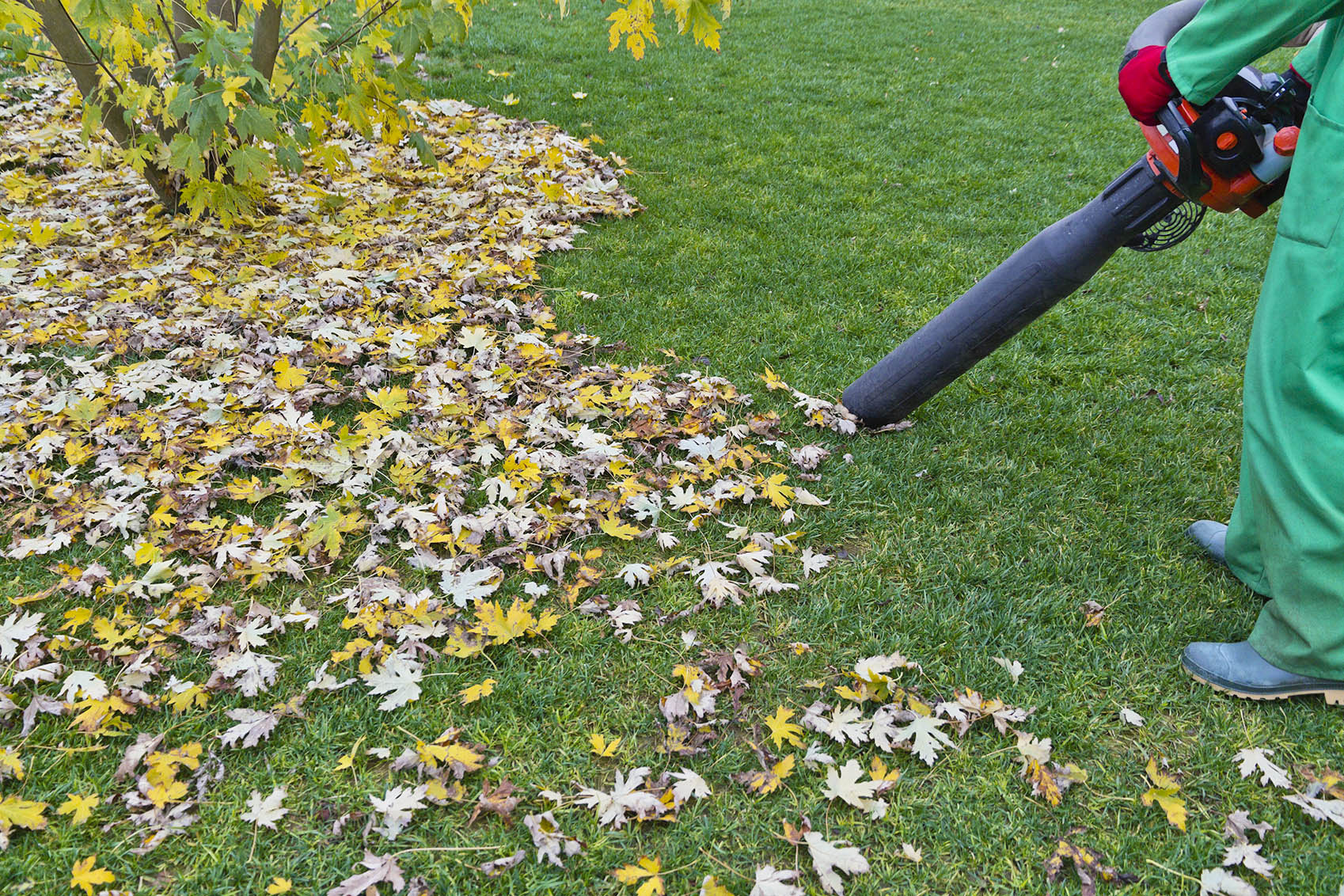
Other Methods to Turn Leaves Into Mulch
Mowing leaves for mulch in fall is an easy solution, but there are other options. Consider one of these methods to mulch leaves in your lawn.
- Stand-alone mulcher. Built for shredding, these devices sit in a spot in your yard, looking similar to a wood chipper. Just dump the leaves into the hopper and remove a handy collection bag below to carry the mulched leaves to another area of the landscape.
- Handheld mulcher. Most leaf mulchers are handheld types, looking like leaf blowers. They might have gas, electric cord, or battery power. Most shred the leaves and collect them in an attached bag.
- String trimmer. If you can take a little dust (and protect your eyes), throw your leaves into a large bucket or trash can and insert a string trimmer (or weed whacker) to mulch leaves in a matter of minutes.
- Compost. Although leaves break down in compost piles best if they already have been downsized. But you can mix some full leaves into the pile and they eventually will break down. Of course, the dime-size pieces you create with a mower or handheld mulcher can go right onto garden beds and break down to provide organic matter to the soil.
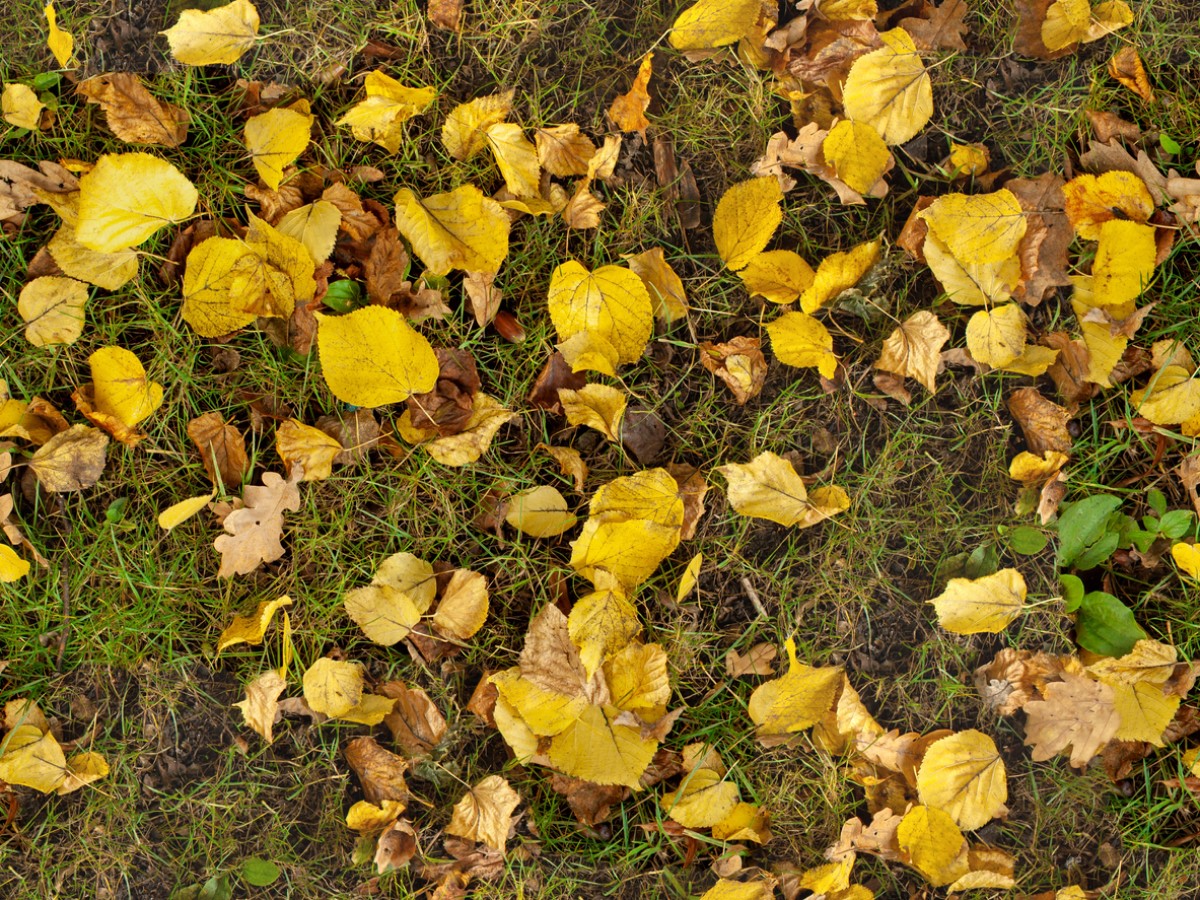
FAQs
Q: Is mulching leaves good for the lawn?
Mulching leaves is like adding free compost to the lawn. Leaving a thick layer of full leaves can choke out the grass beneath, but mowing leaves chops them into smaller pieces so air and sun can get through. The mulched leaves eventually decompose. Regularly mulching leaves and leaving a thin layer on the grass can cut down on weeds after a few years.
Q: What happens if you don’t rake your leaves?
A thin layer of leaves falling on the soil can create a tiny ecosystem beneath the tree—providing a home for beneficial insects and feeding the soil. But a thick layer mats together and can smother grass. Mulching leaves or leaving a thin layer of fallen leaves does more good than harm.
Q: Will mulching leaves kill grass?
Mulching leaves and leaving a thin layer of small leaf bits between grass blades actually can help the grass. Leaving a thick layer of whole leaves can harm the grass. Mulching leaves instead of raking saves time and keeps grass healthy.
Q: Is it better to mulch leaves or bag them?
A matter of personal preference, mulching or bagging leaves is up to the land owner (or sometimes to homeowners’ association rules). However, mulching leaves into tiny pieces is more environmentally friendly and can save money and time on manual labor, plus uses fewer plastic or paper bags.
Q: Do mulched leaves make good fertilizer?
Mulched leaves make good compost, a gentle, slow-acting way to improve soil health. Leaves also add nitrogen to the soil. Avoid using whole leaves if possible because they can mat and smother the soil below. Avoid a few leaf types, such as those from black walnut trees, which slow plant growth if used as mulch.
Final Thoughts
Why spend a pretty fall weekend raking and bagging leaves when you can mulch them easily with a lawn mower? Choose the path of least resistance—and that more closely mimics nature—by mulching leaves. You’ll also save on plastic garbage bags. Follow the steps outlined above to make mulching easy and supportive of green grass and better soil.
